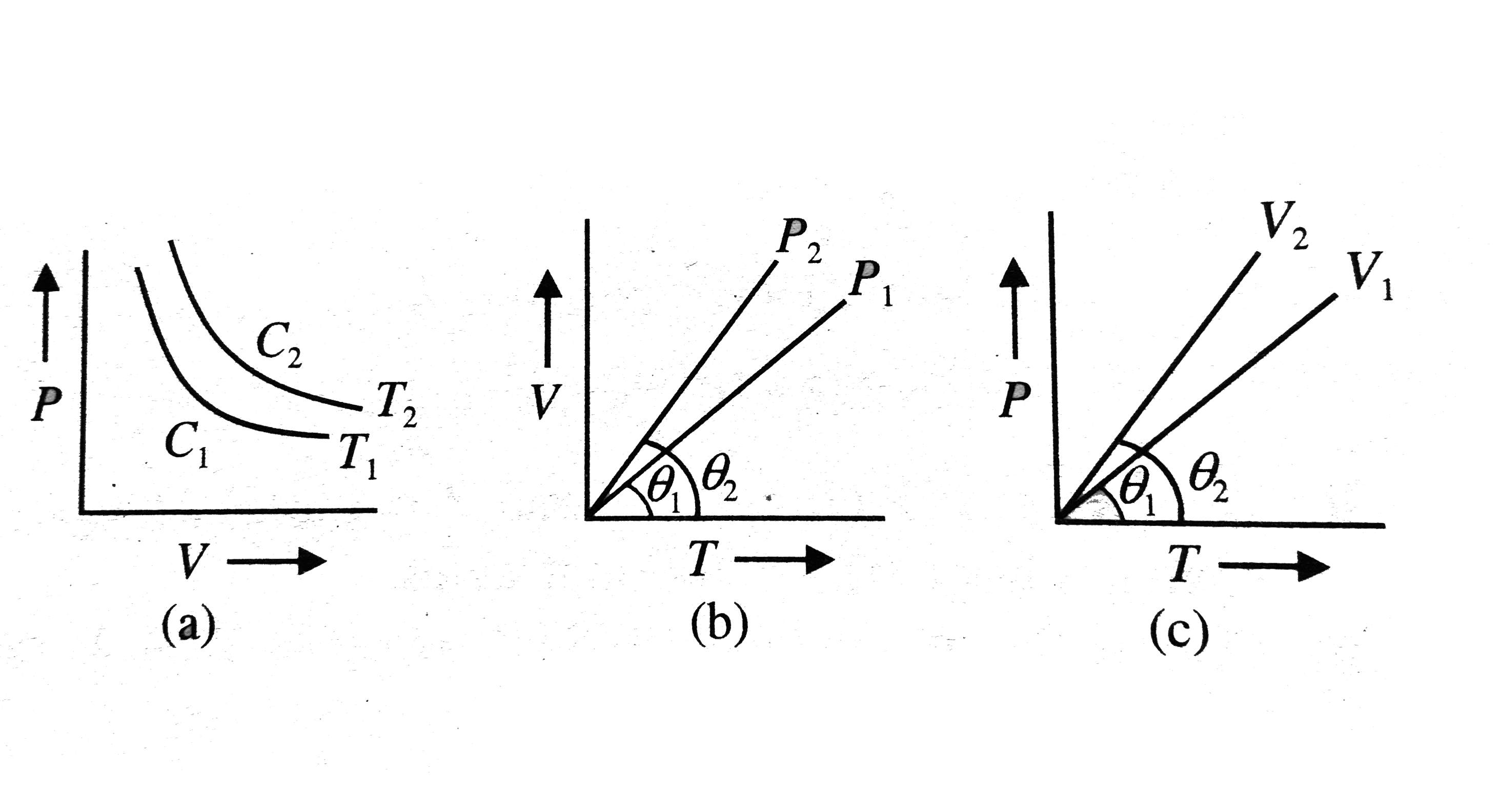Explain the difference between isobaric and isochoric processes.
To explain the difference between isobaric and isochoric processes, we can break it down into a step-by-step solution:
Step 1: Define Isobaric Process
An isobaric process is one in which the pressure of the system remains constant throughout the process. This means that any change in volume occurs at a constant pressure. Mathematically, we can express this as:
- ΔP = 0 (where ΔP is the change in pressure).
Step 2: Characteristics of Isobaric Process
In an isobaric process, since the pressure is constant, the work done by or on the system can be calculated using the formula:
- Work (W) = P * ΔV
where P is the constant pressure and ΔV is the change in volume. The PV curve for an isobaric process is represented as a horizontal line, parallel to the x-axis, indicating that pressure does not change as volume changes.
Step 3: Define Isochoric Process
An isochoric process is one in which the volume of the system remains constant throughout the process. This means that any change in pressure occurs at a constant volume. Mathematically, we can express this as:
- ΔV = 0 (where ΔV is the change in volume).
Step 4: Characteristics of Isochoric Process
In an isochoric process, since the volume is constant, no work is done by or on the system, as the formula for work becomes:
- Work (W) = P * ΔV = P * 0 = 0.
The PV curve for an isochoric process is represented as a vertical line, parallel to the y-axis, indicating that volume does not change as pressure changes.
Step 5: Summarize the Differences
To summarize the differences:
- Isobaric Process:
- Pressure remains constant (ΔP = 0).
- PV curve is horizontal (parallel to the x-axis).
- Work is done (W = P * ΔV).
- Isochoric Process:
- Volume remains constant (ΔV = 0).
- PV curve is vertical (parallel to the y-axis).
- No work is done (W = 0).
An isobaric process is one in which the pressure of the system remains constant throughout the process. This means that any change in volume occurs at a constant pressure. Mathematically, we can express this as:
- ΔP = 0 (where ΔP is the change in pressure).
In an isobaric process, since the pressure is constant, the work done by or on the system can be calculated using the formula:
- Work (W) = P * ΔV
where P is the constant pressure and ΔV is the change in volume. The PV curve for an isobaric process is represented as a horizontal line, parallel to the x-axis, indicating that pressure does not change as volume changes.
An isochoric process is one in which the volume of the system remains constant throughout the process. This means that any change in pressure occurs at a constant volume. Mathematically, we can express this as:
- ΔV = 0 (where ΔV is the change in volume).
In an isochoric process, since the volume is constant, no work is done by or on the system, as the formula for work becomes:
- Work (W) = P * ΔV = P * 0 = 0.
The PV curve for an isochoric process is represented as a vertical line, parallel to the y-axis, indicating that volume does not change as pressure changes.
To summarize the differences:
- Isobaric Process:
- Pressure remains constant (ΔP = 0).
- PV curve is horizontal (parallel to the x-axis).
- Work is done (W = P * ΔV).
- Isochoric Process:
- Volume remains constant (ΔV = 0).
- PV curve is vertical (parallel to the y-axis).
- No work is done (W = 0).
Topper's Solved these Questions
- INTERNAL ENERGY BOOK - ICSECHAPTER - INTERNAL ENERGY EXERCISE - VERY SHORT ANSWER QUESTIONS
17 Videos
- INTERNAL ENERGY BOOK - ICSECHAPTER - INTERNAL ENERGY EXERCISE - SELECTED PROBLEMS (FROM FIRST LAW OF THERMODYNAMICS )
6 Videos
- INTERNAL ENERGY BOOK - ICSECHAPTER - INTERNAL ENERGY EXERCISE - LONG ANSWER QUESTIONS
8 Videos
- GRAVITATIONBOOK - ICSECHAPTER - GRAVITATIONEXERCISE - FROM THE HUBBLE TELESCOP
2 Videos
- MOTION IN FLUIDS BOOK - ICSECHAPTER - MOTION IN FLUIDS EXERCISE - SELECTED PROBLEMS (FROM POISEUILLE.S FORMULA)
19 Videos
Similar Questions
During an isochoric process
View SolutionDistinguish between isobaric and isochoric process.
View SolutionExplain the difference between distance and displacement with an example.
View SolutionExplain the difference between a square pyramid and a square prism.
View SolutionWith the help of diagrams, explain the difference between regular and irregular reflection.
View SolutionExplain whether (a) T2>T1, (b) P2>P1 and (c ) V2>V1 or otherwise in Fig., which represent in isothermal, isobaric, and isochoric processes for the same mass of an ideal gas, respectively.

View SolutionWith the help of diagrams, explain the difference between the regular and irregular reflection.
View SolutionWhich of the following best explains the difference between epitope and an antigen
View SolutionExplain the difference between a frequency distribution and a cumulative frequency distribution.
View SolutionExplain the difference between 'steady state' and 'variable state' of a thermal conductor.
View Solution
